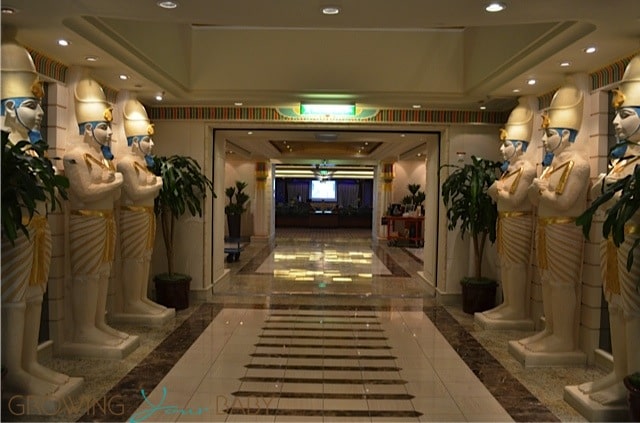

1353–1336 BC), that is addressed to "Great House, L, W, H, the Lord". The earliest confirmed instance where pr ꜥꜣ is used specifically to address the ruler is in a letter to the eighteenth dynasty king, Akhenaten (reigned c. Sometime during the era of the New Kingdom, pharaoh became the form of address for a person who was king. Pharaohs' tombs were provided with vast quantities of wealth The Mask of Tutankhamun from tomb KV62 in the Valley of the Kings. From the Twelfth Dynasty onward, the word appears in a wish formula "Great House, May it Live, Prosper, and be in Health", but again only with reference to the royal palace and not a person. It was the title of the royal palace and was used only in larger phrases such as smr pr-ꜥꜣ "Courtier of the High House", with specific reference to the buildings of the court or palace. The word pharaoh ultimately derives from the Egyptian compound pr ꜥꜣ, * /ˌpaɾuwˈʕaʀ/ "great house", written with the two biliteral hieroglyphs pr "house" and ꜥꜣ "column", here meaning "great" or "high". At times, a combination of these headdresses or crowns worn together was depicted. With time new headdresses were introduced during different dynasties such as the Khat, Nemes, Atef, Hemhem crown, and Khepresh.

After the unification of both kingdoms, the Pschent, the combination of both the red and white crowns became the official crown of the pharaoh. ĭuring the early days prior to the unification of Upper and Lower Egypt, the Deshret or the "Red Crown", was a representation of the kingdom of Lower Egypt, while the Hedjet, the "White Crown", was worn by the kings of Upper Egypt.

The king was responsible for maintaining Maat ( mꜣꜥt), or cosmic order, balance, and justice, and part of this included going to war when necessary to defend the country or attacking others when it was believed that this would contribute to Maat, such as to obtain resources. Religiously, the king officiated over religious ceremonies and chose the sites of new temples. The king owned all of the land in Egypt, enacted laws, collected taxes, and served as commander-in-chief of the military. The king thus was deputised for the deities in a role that was both as civil and religious administrator. One of the roles of the king was as an intermediary between the deities and the people. In Egyptian society, religion was central to everyday life. The Golden Horus and the nomen and prenomen titles were added later. In the early dynasties, ancient Egyptian kings had as many as three titles: the Horus, the Sedge and Bee ( nswt-bjtj), and the Two Ladies or Nebty ( nbtj) name. 1353–1336 BC) or an inscription possibly referring to Thutmose III ( c. The earliest confirmed instances of "pharaoh" used contemporaneously for a ruler were a letter to Akhenaten (reigned c. However, regardless of gender, "king" was the term used most frequently by the ancient Egyptians for their monarchs through the middle of the Eighteenth Dynasty during the New Kingdom. 3150 BC) until the annexation of Egypt by the Roman Empire in 30 BC. r oʊ/ Egyptian: pr ꜥꜣ Coptic: ⲡⲣ̅ⲣⲟ, romanized: Pǝrro Biblical Hebrew: פַּרְעֹה Parʿō) is the vernacular term often used for the monarchs of ancient Egypt, who ruled from the First Dynasty ( c. Pharaoh ( / ˈ f ɛər oʊ/, US also / ˈ f eɪ.


 0 kommentar(er)
0 kommentar(er)
